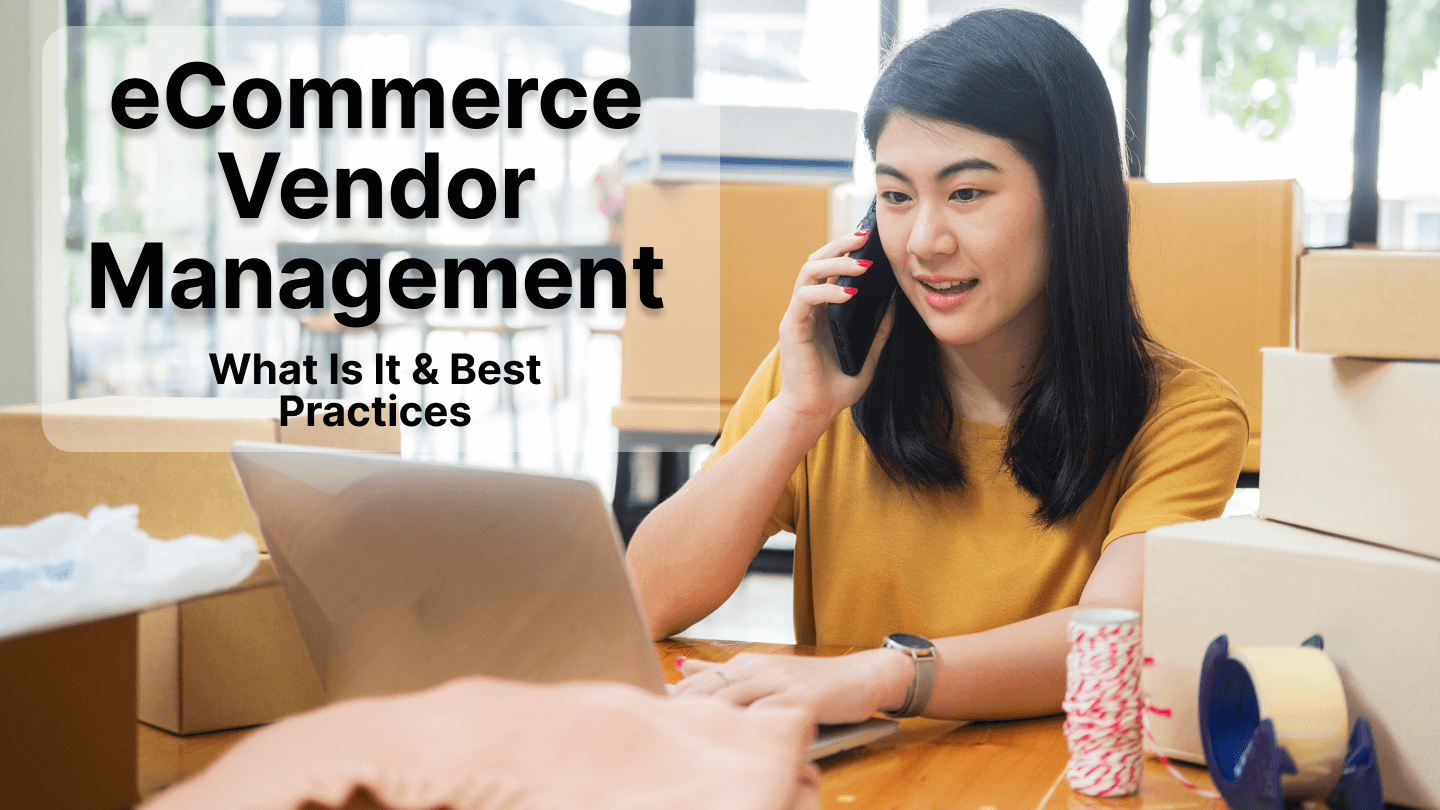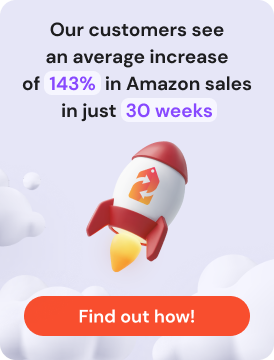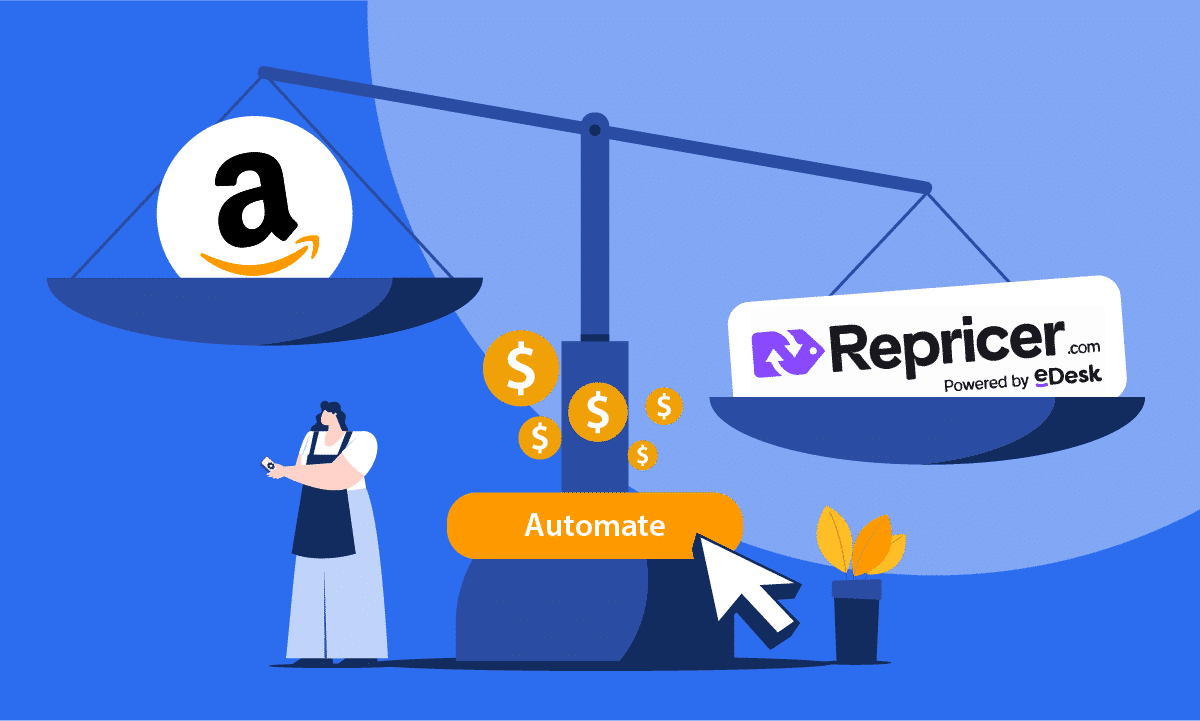Building the right relationships with your vendors as an eCommerce business is essential to long-term sustainability and growth. The two pillars of these relationships are human interaction and easily digestible and accurate data.
It’s important to have the right tools in place to ensure communication regarding vendor expectations is cohesive, that KPIs are easily measurable, and that data drives these working relationships – but always built and developed on trust.
Let’s explore vendor management and identify the four best practices for seamless vendor management. We’ll examine why strategic sourcing is integral to success, the KPIs eCommerce brands should track for their vendors, and why maintaining personal relationships is just as critical as evaluating data.
Vendor Management – An Overview

Vendor management is almost self-explanatory in its definition. You’re managing your vendors and suppliers in a calculated, organized way.
Depending on the size of your business, you or your team will need to implement vendor management guidelines to oversee your vendor performance and maintain these mutually beneficial relationships. It’s also key to review these guidelines and processes periodically to avoid scope creep for your vendors and to ensure costs stay low – while still providing the highest value.
As mentioned, we know data measurement and relationship management are two key pillars of vendor management. A robust vendor management plan guided by these two pillars helps your team select the right vendors. But it also enables you to develop meaningful and long-lasting relationships, organize them by category, establish KPIs specific to each vendor, and eliminate risk while boosting value for all involved.
Above all, vendor management will help your eCommerce team meet revenue and business goals, minimize service disruption, and improve customer experience.
Let’s evaluate four best practices for managing vendors within the eCommerce space.
Best Practices For Vendor Management
Identify Criteria For Vendor Partners
Procuring quality vendors is an art, and if your eCommerce company is large enough – it’s worth having someone fill this role full-time.
Finding vendors that provide high-quality products, exemplary client service, and competitive rates are worth their weight in gold and will continuously deliver value to your brand. For the eCommerce model, this is doubly important, as the hope is that the relationships you build with vendor-partners are fruitful, pleasant, and long-lasting.
When looking for quality vendors, look for the following:
- Level of expertise. A vendor with plenty of experience, team members, and firm operating standards versus a vendor that’s just started out will be the ideal choice. Experienced suppliers clearly understand how they can benefit your eCommerce brand and your customers and will be well-versed in the nuance of running a business.
- Financial health and reputation. Prospective vendors should have a clear business model, low internal turnover rates, excellent reviews, references, media, and press (if applicable), and maintain healthy relationships with other clients.
- Product quality and price. Low prices aren’t always the better option. Be wary of prospective vendors who charge too little for their wares. These empty promises could indicate a poor quality product, shoddy quality, and frequently cut corners. Be sure to perform your market research on the product in question, and always arrive at a mutually beneficial price point. If your vendor feels shortchanged or you feel gouged, it can breed resentment.
From a human perspective, you’re looking for someone with whom you can work well. From a business perspective, you’re looking for a long-term partnership that helps bring you and your client healthy returns.
Key Tip: Always Come Prepared With Data
When searching for new vendors, remember that a discerning vendor-partner will evaluate your processes and platform. For example, no vendor wants to deal with customer complaints regarding your eCommerce website. Instead, their focus should be on their suppliers, quality control, and shipping promptly – not the efficiency of your checkout process.
They will also be looking for your Key Performance Indicators (KPIs) and how they can ensure these are met and exceeded. A good vendor will want to know who to assign the KPI management to, learn who will measure the KPI, how often people on your team will review the KPI progress, and so on.
If you come poorly prepared with no way of letting your prospect know how you’ll measure their success, they may want to steer clear of business relationships that offer unclear guidelines – this is a recipe for disaster.
When you approach prospecting for new vendors with data as your foundation, it’s much easier to win new business and secure long-term partnerships with qualified vendors.
Implement Achievable KPIs

Key performance indicators established well before taking on new vendors that are realistic for each partner are critical to not only the success of your eCommerce business but to your relationship with your vendor partners. You don’t want there to be a miscommunication – or lack of alignment – early in your working relationship that causes friction, or leads to problems down the road.
With each vendor partner you onboard, identify the KPIs you want to integrate into your contract, which can be as detailed or basic as you like.
Some examples of measurable KPIs are:
- Customer satisfaction scores. Most vendors will handle product-specific customer complaints and concerns within their team. However, remember your platform should have a smooth checkout process and seamless navigation – which greatly impacts the overarching customer experience.
- Successful package delivery. Vendors will be responsible for selecting delivery clients and managing the shipping process. Incorrect tracking labels, late delivery, incorrect delivery, and damage to the product in transit contribute to this KPI and are instrumental in customer satisfaction.
- Shipping lead time measures how long the vendor needs between order placement and shipment – usually no longer than a few days, depending on the nature of the product.
- Quality control. Damaged or inaccurate orders only increase costs, slow production, and leave a poor taste in your client’s mouth. This KPI should measure accurate orders against total orders placed.
- Order capacity. The ability to scale should not only be a piece of criteria when evaluating potential vendors, but a key KPI. Evaluate total orders against the number of delayed shipments or orders in the queue for processing after submission.
- Risk Management. There should be clear credentials and indicators that, upon onboarding, your vendors are financially stable and source products sustainably. Most importantly, programs and infrastructure should be in place that keeps all data secure.
This list isn’t exhaustive of measurable KPIs for eCommerce vendors, and the applicable KPIs certainly will depend on the industry and the size of your business. Still, it gives a good sense of where to start when drawing up contracts for each vendor.
Of course, always remember we’re human. Delays like inclement weather, natural disasters, political unrest, and other incidents beyond our control can impact KPI data, so keep this in mind when tracking results.
Nurture Vendor Relationships
Managing your vendor relationships and tracking data-driven results is more than establishing the KPIs you hope to achieve with the vendor and sending them on their merry way.
Managing relationships is just as key as tracking data. Periodically review performance with your vendor and provide positive feedback and correction as needed. This review cycle helps you and the vendor work together to correct any scope creep and squash issues before they arise.
When communicating with vendors on a human level, it’s important to stay grounded, be flexible, and find a compromise where it makes sense. Take the time to understand where your vendor is coming from if disagreements arise, and find a way to meet them in the middle.
Above all else, be sure to pay your vendors on time each month. Timely payment is the easiest way to build trust that leads to long-term relationships.
Implement A Sound Vendor Management System
Integrating an automated Vendor Management System is critical for a successful eCommerce business.
VMS software programs help create robust vendor profiles, track and manage KPIs for each vendor, manage tasks, and keep costs down and value up.
Each process in vendor management has a lifecycle – some more complex than others. Invoicing, for example, can be a tedious process with several steps. The automation capabilities in VMS software reduce the need for manual, tedious data entry and cross-referencing and help to streamline these workflows.
With the proper B2B payment automation in place, it’s much easier to manage cash flow with your vendors, and as any eCommerce business owner knows, cash flow is king.
Finding The Balance Between Data & People
As we’ve covered, automation is essential for wading through manual tasks that bog down any corporation – especially eCommerce brands.
Automating such tasks creates more space to cultivate the relationships that brands have with their vendors, which fosters a sense of purpose and community integral to building long-term relationships. Automation also compiles KPI data in a manner digestible to both you and your vendors, which makes it easy to find solutions to any issues that may arise.
From a human perspective, developing a robust procurement process that eliminates unqualified vendors is critical to starting on the right foot. From there, acting respectfully and finding compromise is key to building that relationship with your vendors.





